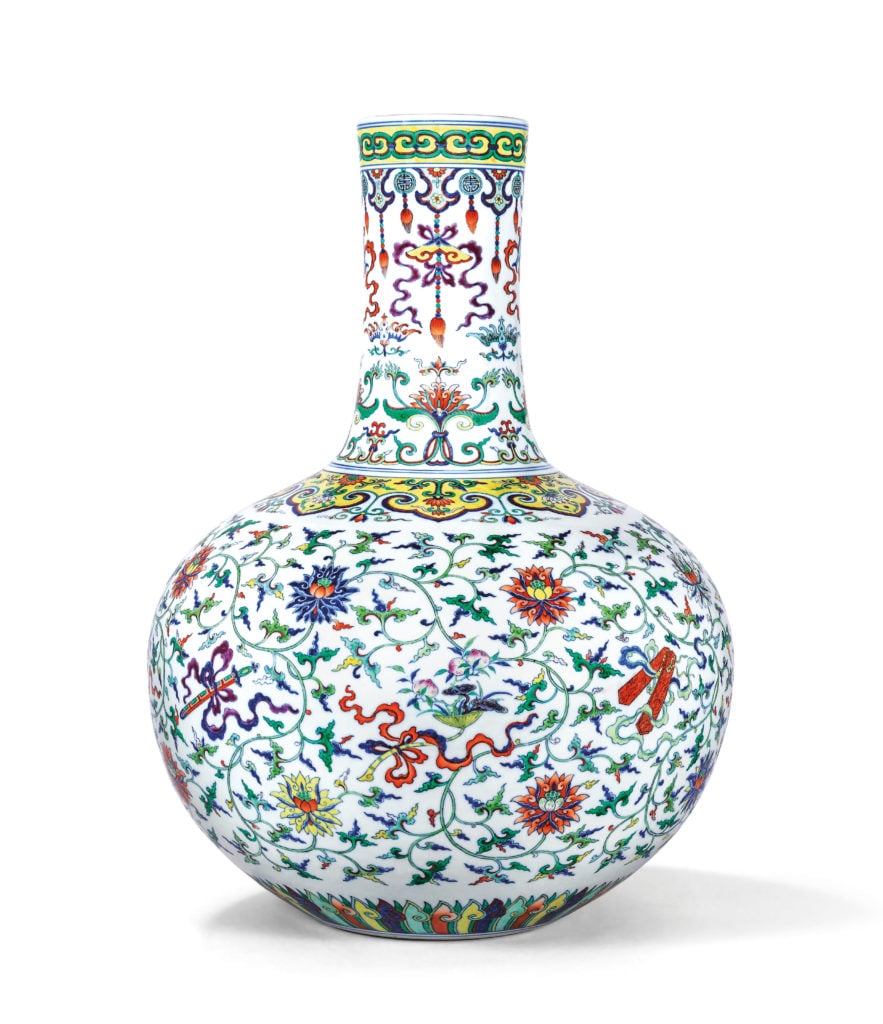Art World
This Rare Chinese Vase Sat in Storage at an Oklahoma Museum for Years. Now the $14.5 Million It Won at Auction Changes Everything
Donated to Tulsa's Philbrook Museum of Art in 1960, the artifact was seldom shown.

Donated to Tulsa's Philbrook Museum of Art in 1960, the artifact was seldom shown.

Henri Neuendorf

The Philbrook Museum of Art in Tulsa, Oklahoma, sold an extremely rare but seldom-shown 18th-century Chinese vase for $14.5 million at Christie’s Hong Kong. The tianqiuping vase, which was commissioned by the Qianlong Emperor, was sold in a special one-lot auction on Wednesday.
Prior to the sale, the artifact languished in the American institution’s storage facility for over a decade, and museum officials ultimately decided to cash in on the vase to fund the institution’s acquisitions endowment.
“This sale will provide us with a way to broaden our collection, to help us create an even greater impact on our community through the art we exhibit and the stories we tell with that art,” Philbrook director Scott Stulen told Tulsa World. “This one piece will potentially allow us to purchase hundreds of other works of art.” The director added that funds “will go into a restricted endowment so that the interest will be used only to purchase art.”
For collectors of Chinese ceramics, pieces from the period under Emperor Qianlong—when the Chinese empire was at its height—are among the most desirable.
This particular example is especially valuable due to its unique size and shape. The straight and cylindrical neck sitting on a bulbous and round body is highly unusual for ceramics of this period and would have required an enormous amount of expertise and technical skill to execute at the time.
The piece also boasts extremely detailed and vibrantly painted motifs. According to Christie’s, the vase is decorated with Buddhist and Daoist symbolism representing peace, longevity, good fortune, abundant harvest, and plentiful offspring.
Additionally, the object includes an illustrious provenance, brought to America around 1925 by the oil magnate and prolific collector of Chinese ceramics George Hathaway Taber. The magnate’s daughter, Francis Keally, donated the vase to the Philbrook in 1960.